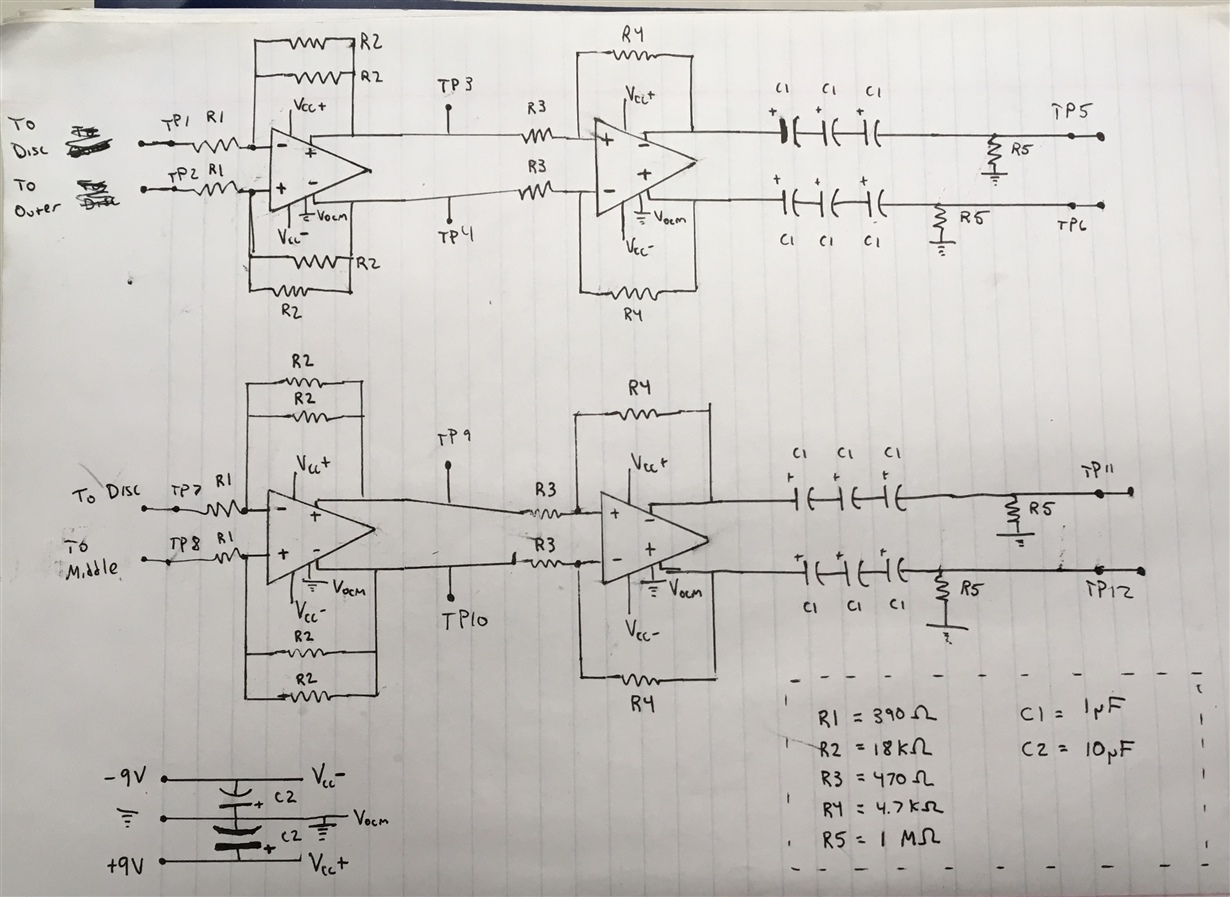When configuring the THS4131 as depicted in Figure 30 in the THS4131 datasheet, we are able to see an amplified differential signal output with a gain of ~23, using resistor values Rg = 390 Ohms, Rf = 9 KOhms. When we place a second THS4131 in parallel with the first one, where the negative inputs to both THS4131's are shared (separated by resistors Rg), and the positive inputs are two independent sources, we consistently see ~13Hz noise plus harmonics on the outputs of both amplifiers, even when there is no input signal for either THS4131. When the negative inputs are not connected to each other, we do not see this ~13Hz noise on either amplifier. Both amplifiers are powered by two 9V batteries with -VCC and +VCC capactively coupled to ground with a 10 uF capacitor. Vocm is connected directly to ground. What is the origin of this noise? How can we remove this noise from our outputs?
Thank you,
Richie


